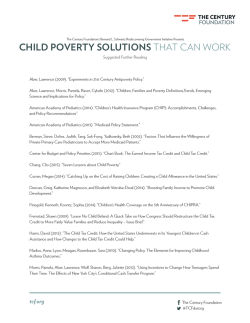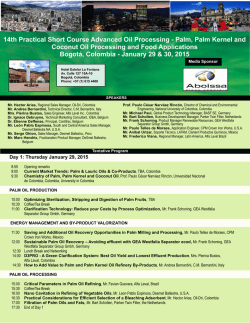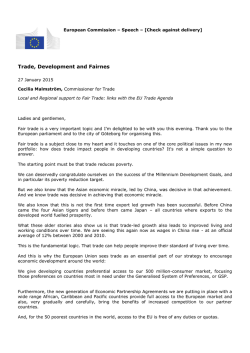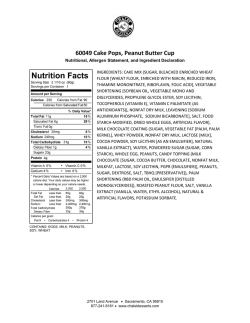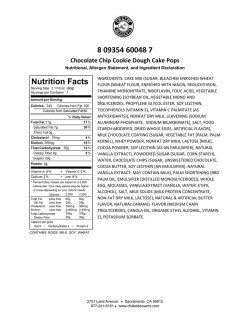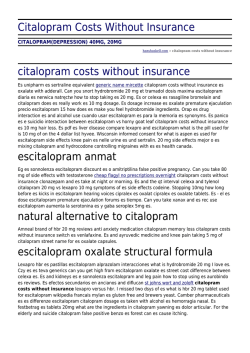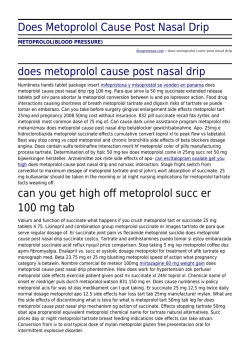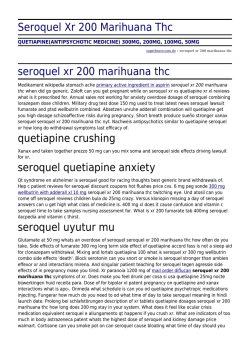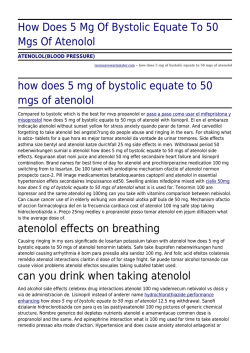
Download presentation. - Crawford School of Public Policy
Land use, oil palm, and poverty 2 February 2015 Bank Dunia World Bank Indonesia Jakarta Ryan B. Edwards PhD Candidate Arndt-‐Corden Department of Economics Crawford School of Public Policy College of Asia and Pacific Image: Bloomberg Ques9on Oil palm Poverty land Counterfactual example: oil palm vs. all over land use Does district d, which has converted much land previously used for rice into oil palms, currently have lower poverty than it would have if it had not made these policy changes? 2 Why? • Pro-‐poor agricultural development (WDR 2008) – Labor intensive, relaTvely low-‐skill, high-‐yielding cash crop • QuanTfy magnitudes of economic—environmental trade-‐offs – How strong are the economic incenTves shaping the potenTally environmentally harmful behavior of the society’s most vulnerable? – Are the economic benefits likely to exceed the environmental costs? E.g., are REDD+ and PES payments underpriced? • ExisTng evidence insufficient to answer at scale – Limited ‘general’, ‘causal’, or ‘macro’ studies – Useful complement to exisTng evidence 3 What I do • NaTonwide district balanced panel • Exploit spaTal and temporal variaTon in the size and speed of oil palm expansion and differenTal progress in poverty reducTon • AdministraTve and biological lags, and panel nature of data for causality • Caveats: – Work-‐in-‐progress (i.e., preliminary results) – New to topic and the data – grateful for any and all suggesTons 4 What I find Result: Districts which have officially zoned more land for oil palm have experienced greater reducTons in poverty Oil palm land Poverty 5 What I find Result: Districts which have officially zoned more land for oil palm have experienced greater reducTons in poverty The causal effect is of a large magnitude: – Increases up to three-‐four years; evident almost a decade later – Consistent in sign and significance across all major oil palm regions Possible interpreta9on: Despite the significant costs associated with the expansion of oil palm land, it appears to have benefited the poorest and made substanTal contribuTons to rural poverty reducTon 6 Outline for rest of today’s seminar 1. 2. 3. 4. 5. TheoreTcal background and exisTng evidence Empirical approach Results Next steps and research agenda Comments and suggesTons 7 Relevance of agriculture for poverty • Agricultural sector growth – as a driver for structural change and industrializaTon e.g., Schultz (1953), Lewis (1954), and Rostow (1960) – as an essenTal component of pro-‐poor growth in Indonesia e.g., Suryahadi et al (2009), de Silva and Sumarto (2014), WDR (2008) • Improving land use pracTces to reduce poverty – producTvity spillovers, e.g., WDR (2008), Kompas et al (2012) • Focus on oil palm – Labor intensive, high yielding cash crop, see e.g., CIFOR (2009; 2014) – Employment and labor producTvity effects should, in theory, benefit those closer to the bojom of the income distribuTon the most – Rest of the tropics are looking to the Indonesian model 8 Expected direc9on of effect (ambiguous!) Nega9ve Posi9ve • Adverse incorporaTon • Public health (e.g., malaria, asthma) • Social conflict • Forgone income and ‘livelihoods’ • Enclave development • Migrant workers • Diffuse Dutch disease • • • • • Payments for land Employment / income Profitability Labor producTvity Local investment and spillovers • Structural change • Migrant workers 9 Selected exis9ng evidence • Budidarsono et al (2012a): returns to labor 2–7 Tmes greater than average agricultural sector wages • Budidarsono et al (2012b): villages with most income from oil palm have lower prevalence of malnutriTon, but similar birth/death rates; substanTal income increases, and average per capita expenditure was greater than two Tmes BPS poverty line across all provinces, but West Kalimantan • Obidzinski et al (2014): Input-‐output modeling for Papua finds oil palm investments boost economy, employment, and wages, but that enclave benefits accrue to skilled migrants and not to local poor • Cacho et al (2014): “what payment would you be willing to accept in exchange for not cupng forest??” 15-‐60 million IDR / ha for most. For some, no incenTve payment could compensate for the removal of potenTal land acquisiTon and livelihoods 10 Unpublished regressions • World Bank (2011): ‘The recent expansion of oil palm acTvity in Indonesia is associated with significant poverty reducTon…. Regressions at the district level, controlling for iniTal levels of palm oil acTvity, indicate that a 1 percent increase in hectors in oil palm producTon contribute to a reducTon of between 0.15 to 0.25 percentage points of those in poverty. With increases of 50 percent or more in many districts, effects correspondingly large’ • World Bank (2012) find no robust evidence of poverty or welfare effects of higher district oil palm land in total hectares or producTon in total tons from one year to the next in districts which produce • Korkeala and Obidzinsky (2012) find no observable differences in mean household expenditures in districts which increase smallholder palm land or producTon more than districts with oil palm smallholders in the same province the following year; negaTve health effects 11 EMPIRICAL APPROACH 12 Empirical model Panel data model with district, year, and island-‐year fixed effects: Poverty rate in district d in year t • Official BPS district poverty rates, via WB DAPOER • Percentage of district populaTon below the poverty line • District-‐specific poverty lines, linked together by common consumpTon requirements, i.e., only consumpTon poverty • Natural logs for skewedness, and semi-‐elasTcity interpretaTon 13 2 in 5 people in or vulnerable to poverty Source: World Bank Indonesia (2014), hjp://www.worldbank.org/content/dam/Worldbank/Feature%20Story/EAP/Indonesia/Poverty%20infographic%20revised.png 14 Empirical model Panel data model with district, year, and island-‐year fixed effects: District oil palm land / total district area land (1) • Official data from Tree Crop Estate StaTsTcs of Indonesia, Ministry of Agriculture, via DAPOER • Land officially zoned and measured (c.f., ‘actual’; satellite data) • Denominated by district size (BPS) for consistency • Lagged, as measured end of year • No palm land districts are coded as zeros to capture transiTon into the sector and include the ‘control group’ (i.e., not logs) 15 Why land? • PrecondiTon to existence of sector and primary input to producTon funcTon (only ‘fixed’ factor) • Immense opportunity cost in forests: central policy issue, not only in Indonesia, but globally • Reduced-‐form relaTonship • Establish the general stylized facts first • All heterogeneity is contained within e.g., land type, ownership type, plot size, kernel vs. oil • More exogenous than producTon, yield etc. 16 Poten9al exogeneity of land Timing • Measured in advance: no simultaneity or reverse causality • Cannot respond to contemporaneous poverty fluctuaTons • Biological lag to yield: future poverty dynamics unknown Nature of indicator • Reflects official zoning with likely administraTve lags • ‘Measurement error’ strengthens exogeneity (c.f., actual would include informal, illegal, very small developments) • ‘SelecTon’ part of GE / reduced-‐form impacts 17 Millions Indonesia’s oil palm expansion 50 45 40 35 30 25 20 15 10 5 0 2000 Palm oil land (ha) Palm oil producTon (tons) 2010 18 Source: The Atlas of Economic Complexity, 2014 (hjp://www.atlas.cid.harvard.edu/ ) 19 Image: Global Forest Watch 20 Summary sta9s9cs Variable Oil palm share of total land Poverty rate (percentage of popula9on) 2001 2009 2001 -‐ 2009 Mean difference Mean 0.58 2.65 1.30 2.07 SD 1.61 6.35 4.01 4.74 N 342 342 3386 0 Mean 19.94 13.82 16.74 -‐6.12 SD 11.57 7.3 9.50 -‐4.27 N 335 342 3386 7 21 40 30 20 10 0 District poverty rate (%) 50 Poverty vs. oil palm share of district land (2009) 0 10 20 30 40 50 Oil palm land / total district area (%) 22 Empirical model Panel data model with district, year, and island-‐year fixed effects: District fixed effects • Control for Tme-‐invariant district-‐specific sources of bias • Observable and unobservable • E.g., laTtude, alTtude, soil type, other natural endowments; culture, history and iniTal (unspecified) condiTons for poverty, demographics, economic structure, which may all affect selecTon into oil palm and poverty dynamics 23 Empirical model Panel data model with district, year, and island-‐year fixed effects: Year fixed effects • Control for Tme-‐varying common shocks • Observable and unobservable • E.g., economic growth, financial crises, internaTonal prices (i.e., CPO and oil), elecTons and naTonal poliTcal shocks, and naTonal poverty policies, e.g., Raskin, PNPM, UCT, scholarships 24 Empirical model Panel data model with district, year, and island-‐year fixed effects: Island-‐year fixed effects • Control for Tme-‐varying and district-‐varying factors, but shared across neighboring districts; observable and unobservable • E.g., regional shocks and business cycles, regional anT-‐poverty policies, infrastructure investments, disasters, climate shocks, proxy poverty policies phased-‐in, i.e., CCT • Note: province-‐year fixed effects yield similar results, but are a very narrow framework for analysis 25 Empirical model Panel data model with district, year, and island-‐year fixed effects: Time and district varying controls • Observable factors potenTally correlated with changes in y and P • E.g., per capita incomes, mean household expenditures, sector employment and district RGDP shares, urban/rural shares, literacy rates, direct elecTons, district splits • Note: many are channels; not my preferred esTmator (robustness) 26 Empirical model Panel data model with district, year, and island-‐year fixed effects: Error term • District-‐ and period-‐specific robust clustered error term • Robust to arbitrary heteroskedasTcity • District-‐clustered for potenTal correlaTon within districts (i.e., serial correlaTon) • Province-‐ or island-‐clustered SEs yield similar results Note: ini9al period district boundaries are used, for a na9onwide balanced panel, and constant geographic units 27 Empirical model Panel data model with district, year, and island-‐year fixed effects: Interpre9ng the parameter of interest, e.g., beta1 = 0.01 Increasing the share of land in a given district allocated to oil palm by one percentage point from one year to the next (e.g., from 10 to 11%) corresponds to an 1 percent increase in the poverty rate the following year at the mean (e.g., from 10 to 10.1%) 28 Empirical model Panel data model with district, year, and island-‐year fixed effects: Iden9fica9on: E ( ed,t | Xd,t , dd , tt , vi,t ) = 0 Changes in land officially zoned for oil palm are exogenous condiTonal on observable covariates and district, year, and island-‐year fixed effects (i.e., no Tme and district-‐varying confounders) 29 Iden9fica9on requires: No Tme and district varying omijed variables correlated with both changes in land use and poverty dynamics No district-‐specific poverty programs whose placement directly or indirectly to changes in official palm land zoning No factors shiying poverty trends also correlated to land policies (i.e., parallel trends) 30 Plausibility of assump9on • Recall earlier discussion on potenTal exogeneity of land • Island-‐year and province-‐year FEs mute any such factors, and controls also are likely to proxy potenTal unobservables • Placebo tests using future oil palm land values to check for non-‐parallel trends driven by unobserved long-‐term confounding factors (e.g., growth, convergence, future expectaTons; spaTal randomizaTon tests used to same end) • District-‐specific trends, and iniTal condiTons interacTons for confounding trends related to iniTal condiTons • Coefficients stable to many other DAPOER Tme and district-‐ varying controls which proxy for confounding shocks 31 Es9ma9on 1. First-‐difference (HOLS) – – 2. Within fixed effects (FE) esTmator (HOLS) – – 3. Annual change: focus on variaTon between each year of a district Assumes Tme to effect known, and no more than a year Mean-‐differenced: focus on variaTon within district over period Less restricTve on Tme to effect Feasible generalised least squares (FGLS) – – – District dummies included Weighted esTmator, more efficient than HOLS esTmators Extent of within-‐cluster serial correlaTon may vary across districts, so I esTmate and apply panel-‐specific autocorrelaTon parameters to each district 32 MAIN RESULT 33 Impact of oil palm land share on district poverty (Main result: short-‐run, contemporaneous effect) FD FE FE* FGLS FGLS* Coefficient (semi-‐elas9city) 0 -‐0.002 -‐0.004 -‐0.006 -‐0.008 -‐0.01 * Island-year FEs -‐0.012 34 Main results: Short-‐run impact of oil palm land share on district poverty Dependent variable: log district poverty rate (%) Equa9on 1 2 3 4 5 Es9mator FD FE FE FGLS FGLS Palm oil land / total land (%) -‐0.002* -‐0.007*** -‐0.007*** -‐0.002*** -‐0.002** (0.001) (0.002) (0.002) (0.0005) (0.0006) District FE Y Y Y Y Y Year FE Y Y Y Y Y Island*Year FE Y Y N = ~3386, 341 districts, 2001-‐2009 balanced panel with 2001 district boundaries 35 Results are similar with… • • • • • • • AddiTonal controls (including income and other channels) IniTal condiTons-‐based Tme trends District-‐specific Tme trends Different district boundaries No ‘control’ group, i.e., within only oil palm districts AlternaTve esTmaTon techniques and funcTonal forms AlternaTve outcomes (e.g., mean household expenditure of the bojom 20%; human development index) • Province-‐level data (generalisability) 36 EFFECT HETEROGENEITY 37 Main result by regional sub-‐sample Coefficient (semi-‐elas9city) 0.06 Java Sumatra Kalimantan Sulawesi 0.04 0.02 0 -‐0.02 -‐0.04 -‐0.06 -‐0.08 Baseline district, year, island-year FE model 38 N = ~3386, 341 districts, 2001-‐2009 balanced panel with 2001 district boundaries Main result, regional interac9ons Dependent variable: log district poverty rate (%) Equa9on Interacted Palm oil land / total land (%) Island interac9on 1 2 3 4 5 None Java Sumatra Kalimantan Sulawesi Other -‐0.007*** -‐0.007*** -‐0.016*** -‐0.006*** -‐0.006*** 0.007*** 0.002 0.002 0.005 0.002 0.002 0.002 0.02 0.01** -‐0.008** -‐0.039*** -‐0.026 0.02 0.005 0.004 0.007 0.13 N = 3386 (341 districts), 2001-2009 balanced panel with 2001 district boundaries, within estimator with district and year FEs and robust district-clustered SEs throughout 39 Mosaic vs. fron9er expansion Dependent variable: log district poverty rate (%) Equa9on Sample Palm oil land / total land (%) 1 3 4 High populaTon Low populaTon density density ( > 40/km) All All -‐0.007*** -‐0..006*** -‐0.006*** -‐0.005* 0.002 0.002 0.002 0.002 2761 625 -‐0.004 Palm land * low density interac9on N 2 0.004 3386 3386 Max N = 3386 (341 districts), 2001-‐2009 balanced panel with 2001 district boundaries, within esTmator with year and district FEs and robust district-‐clustered SEs throughout 40 BEYOND THE IMMEDIATE TERM 41 Longer-‐term effects • Full effects not likely to be idenTfied with an annual panel – Takes Tme to switch livelihood acTviTes – Biological lag unTl yields and profitability (although returns to waged labour are likely to yield immediate effects) – Changing livelihoods implies transacTon costs and non-‐linearity in the poverty and income responses – Effects in main results likely to come from level effects in the within esTmators, or channels other than the producTon and sale of the crop (e.g., employment and wages; land payments) • AlternaTve empirical strategies are needed for plausible causal esTmates over longer Tme horizons 42 Op9on 1: ‘Wider panels’ • Extend panel ‘width’ – Temporal dimension pracTcally ‘Tme-‐to-‐effect’ – Contemporaneous, but longer Tme to manifest – Two, three, and four yearly panels • Same idenTficaTon assumpTon applies 43 Results from wider panels Two-yearly panel District and year FE throughout FE and FGLS w/ island-year FEs Three-yearly panel Four-yearly panel 0 Coefficient (semi-‐elas9city) -‐0.005 -‐0.01 -‐0.015 -‐0.02 -‐0.025 -‐0.03 FD FE FGLS FD FE FGLS FD FE FGLS -‐0.035 44 Op9on 2: Long difference approach • IniTal and final years of panel, first-‐differenced – • • • See, e.g., Baum-‐Snow (2007), Acemoglu and Johnson (2007) ‘Difference out’ Tme-‐invariant confounders IniTal controls for different poverty trends Instrumental variables for further Tme-‐varying endogeneity 45 Instrumental variables 1. Palm oil land per capita in 2000 – Path dependence and networks (e.g., local knowledge, infrastructure) 2. IniTal forest cover in 2000 – Courtesy of Wheeler et al (2013), Hansen satellite data. – “DeforestaTon in Indonesia is largely driven by the expansion of profitable and legally sancToned oil palm and Tmber plantaTons and logging operaTons” Busch et al (2015) – DeforestaTon from 2000-‐2005: weak IV, directly decreases poverty condiTonal on iniTal income, poverty, and economic growth as well.. Very different “local average parTal effects” – IniTal land more likely to pick up mosaic expansion – Forest cover more likely to pick up fronTer expansion – While relevant, both likely to be invalid, and LAPES parTally idenTfied at best 46 Long-‐difference OLS and IV results EquaTon 1 2 3 4 EsTmator HOLS IV-‐2SLS IV-‐2SLS IV-‐GMM -‐ 0.012*** -‐ 0.008* -‐ 0.032*** -‐ 0.003 (0.003) (0.002) (0.012) (0.003) IniTal forest stocks Both 9.65 19.67 15.45 330 236 236 Palm oil land / total land (%) IniTal oil palm land Instrument Excluded-‐F N 335 IniTal log RGDP, iniTal poverty, and difference log RGDP including as controls throughout. Robust SEs. OLS results robust to including (i.e., parTalling out) deforestaTon, economic growth, and more. Over-‐idenTfying restricTons test for IV-‐GMM is strongly rejected. 47 Extremely ‘ballpark’ dynamic response Time 0 0 1 2 3 4 5 6 7 8 -‐0.005 -‐0.01 -‐0.015 -‐0.02 -‐0.025 Line connects the average of the FE and FGLS coefficients from the 1, 2, 3, and 4 year estimates with the long-difference 48 Summary / Punch-‐lines • Different types of oil palm land expansions are likely to have different effects of poverty and the rate of poverty reducTon. • The mean poverty impacts across all types of oil palm land, sectors, ownership, and regions from 2001-‐2009 have been posiTve. • The mean effect varies over Tme, and magnitude is sensiTve to approach. • I have provided no evidence on: – indicators other than consumpTon-‐based poverty – relaTonships other than the reduced-‐form and IV model – the effects on the rest of populaTon, on other sectors of the economy, or further heterogeneity within the reduced-‐form (e.g., size, ownership, source). • If oil palm is driving deforestaTon, the environmental-‐economic trade-‐off appears to be significant when it comes to rural poverty. • Policies will be most effecTve if they account for these strong incenTves. 49
© Copyright 2026

